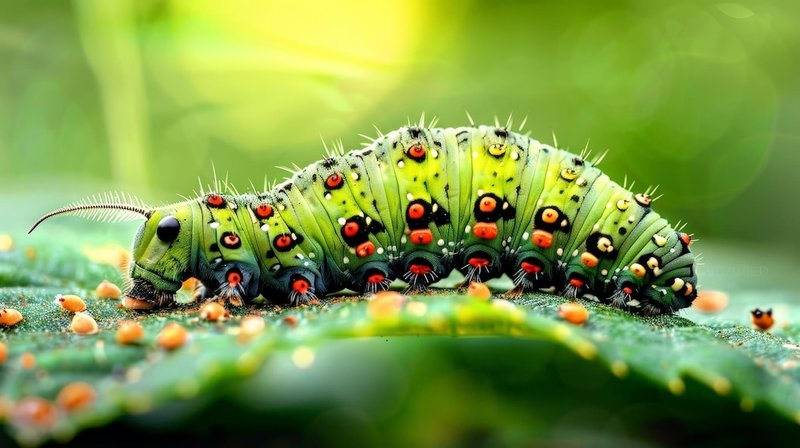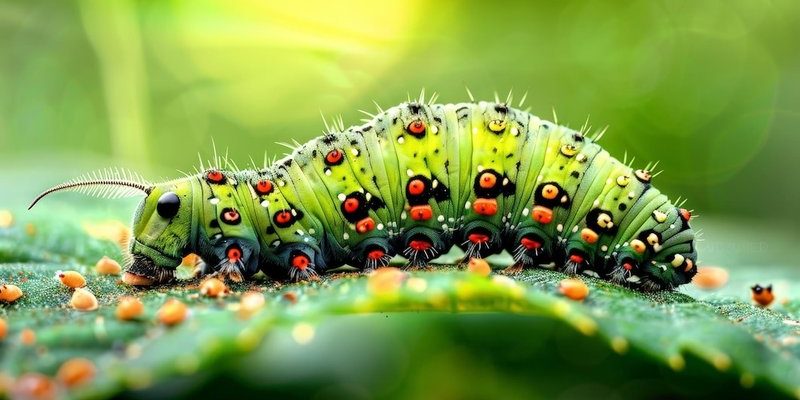
Botflies are known primarily for their unique and somewhat unsettling method of reproduction. Female botflies lay their eggs in or on another host animal, and when the larvae hatch, they burrow into the host’s skin, developing there. While that might sound horrific, it’s essential to recognize that every creature, no matter how strange, has a role. In this blog post, we’ll explore research studies on botfly larvae and how they fit into the ecosystem. You might be surprised by what you learn!
What Are Botfly Larvae?
To understand botfly larvae better, let’s start with what they actually are. Botflies belong to a family of insects called Oestridae, commonly found in tropical and subtropical regions. There are different species of botflies, and they can target various hosts, including mammals like horses and even humans. The life cycle of a botfly includes several stages: egg, larva, pupa, and adult.
During the larval stage, which is perhaps the most infamous, these creatures typically live inside the host’s skin. It’s like having an unexpected roommate! While inside, they feed on the host’s tissue, growing and developing for about 4 to 10 weeks before emerging as adults. Imagine being trapped in a tight space, needing to break free to fulfill your potential—that’s what these larvae experience!
Here’s the kicker: while it might sound harmful, not all botfly larvae result in severe harm to their hosts. Some species have developed a kind of symbiosis, where the host can tolerate the larvae without suffering too much. So, even creepy-crawlies like botflies can have a complicated relationship with their hosts.
The Role of Botfly Larvae in Ecosystems
You might wonder why we should care about something as unsettling as botfly larvae. Well, every organism plays a part in its ecosystem, and botfly larvae are no exception. Their presence can influence both predator and prey dynamics, contributing to the balance of their environment.
First, botflies often serve as a food source for certain predators. Birds, for instance, have been observed preying on botfly larvae-infested animals. This predation can help control botfly populations, ensuring they don’t explode uncontrollably and disrupt the ecosystem. Think of it as a built-in management system that balances various species.
Additionally, the larvae can promote genetic diversity within host populations. By targeting various animals, botflies can introduce stress, which may help the host species evolve defenses over time. It’s an intriguing dance of survival, adaptation, and reproduction that keeps nature dynamic.
Research Studies on Botfly Larvae
Scientists have been studying botfly larvae for years, trying to understand their behaviors, life cycles, and ecological roles. One major area of research focuses on their interactions with various hosts. Studies have shown that the types of hosts and environmental conditions can greatly affect larval development.
For example, researchers discovered that certain botfly species are more likely to inhabit stressed or weakened hosts. In a way, this could be nature’s way of cleaning up populations that are struggling. It’s like nature deciding who gets to stay and who needs to leave—making room for stronger individuals.
Another fascinating study examined how botflies could potentially impact livestock health. Farmers in certain regions often worry about these larvae, as they can cause infections in cattle. Understanding the botfly’s role can lead to better management practices and healthier livestock, which ultimately contributes to the agricultural ecosystem.
Botflies and Their Hosts: A Complex Relationship
Let’s dig a little deeper into the relationship between botfly larvae and their hosts. This relationship can be described as parasitic, but it’s not always harmful. While botflies do feed on their hosts’ tissues, some hosts can adapt to coexist with these larvae without experiencing severe effects.
Consider horses, which are common hosts for certain botfly species. In many cases, horses can tolerate the presence of botflies without significant health issues. This ability allows both the botfly species and horse populations to continue thriving. The larvae, in this case, merely serve to regulate the horse population, preventing overgrowth.
However, this isn’t a one-sided relationship; hosts can develop defenses against botflies. For example, some animals have been observed grooming themselves more frequently to remove eggs or larvae. This is nature’s way of saying, “I’m not going down without a fight!”
Botflies: The Good, The Bad, and The Ugly
When discussing botfly larvae, it’s easy to focus on the negative aspects—the creepy factor and potential harm to hosts. However, there’s a broader perspective to consider: the ecological balance they help maintain. Let’s break down the different sides of botflies.
The Good: As mentioned earlier, botflies can help manage ecosystems by controlling host populations and serving as a food source for predators. Their presence can even promote genetic diversity, allowing species to adapt and survive.
The Bad: On the flip side, botfly infestations can lead to significant discomfort and health problems for hosts. In livestock, botfly larvae can cause abscesses or infections that can affect overall health and productivity. Farmers often need to act quickly to prevent serious issues, leading to a cautious view of these pests.
The Ugly: Let’s face it—botfly larvae aren’t winning any beauty contests. Their life cycle can be gruesome, and their method of development is off-putting. Still, every creature, even the most unnerving ones, plays a role in shaping the world we live in.
Future Research Directions on Botfly Larvae
As research continues, scientists are eager to uncover even more about botflies and their ecological roles. One area of interest is the potential for using botflies in biological control methods. For instance, some researchers are looking into how manipulating botfly populations could help manage pest species in agriculture.
Another promising area of study is the impact of climate change on botfly behavior. Changes in temperature and precipitation patterns could alter their life cycles and interactions with hosts. By understanding these dynamics, researchers can better prepare for the ecological shifts that might come with climate change.
Finally, there’s a growing interest in understanding the genetics of botflies. Unlocking the secrets of their DNA could lead to breakthroughs in how we manage infestations and their effects on hosts and ecosystems.
Closing Thoughts on Botfly Larvae and Their Ecosystem Roles
Botfly larvae may seem like an odd topic to explore, but they have significant roles in their ecosystems. From managing host populations to serving as prey for predators, these creepy creatures are more than just a nuisance. They embody the complexity of nature and how each organism contributes to the balance of life.
So, the next time you come across a botfly—or even hear about them—remember that there’s a whole world behind their life cycle. Each botfly plays its part, reminding us that even the most unsettling creatures have a role to play in the grand tapestry of ecology.

